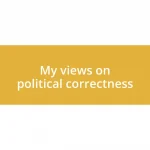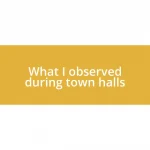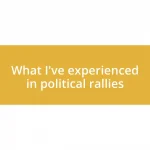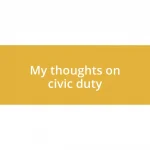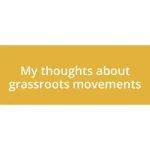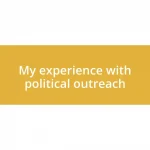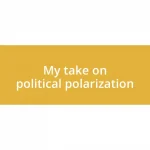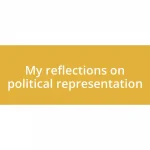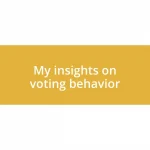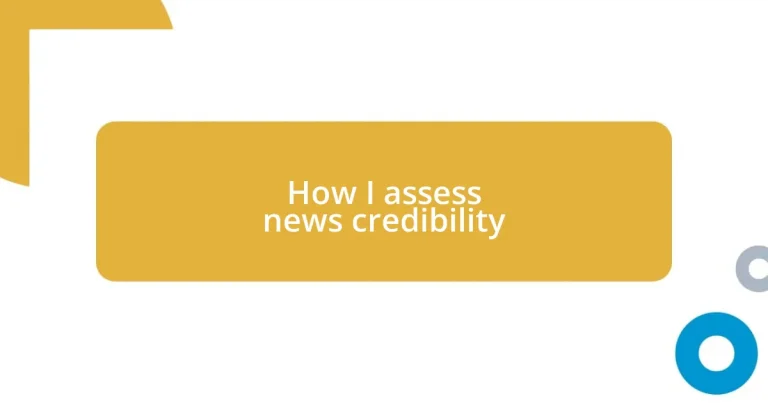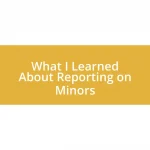Key takeaways:
- Credibility of news relies on source reputation, evidence presented, and awareness of biases.
- Importance of checking factual accuracy through reliable sources and verifying claims with data.
- Recognizing bias in language and framing is essential to understanding the underlying agenda of news articles.
- Utilizing fact-checking tools like Snopes and Google Scholar enhances informed decision-making about news consumption.
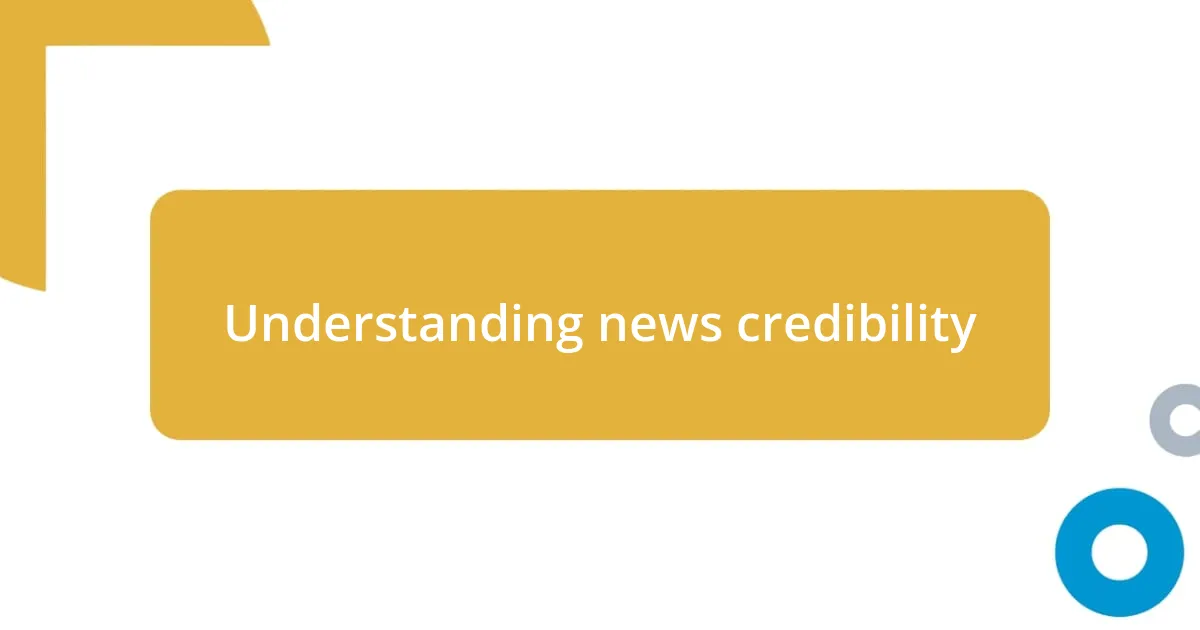
Understanding news credibility
Understanding news credibility starts with recognizing that not all information is created equal. I still remember a moment when I shared a sensational article on social media, only to be called out by a friend for its questionable source. It taught me an invaluable lesson: I learned that credibility hinges on the reputation of the source, the evidence presented, and the potential biases involved.
As I delve deeper into assessing news credibility, I often wonder how many people take the time to check a news outlet’s background before forming opinions. A compelling story can quickly sway our emotions, but without a trusted foundation, we risk embracing misinformation. I’ve found that resources like fact-checking websites can be excellent tools; it’s like having a safety net when navigating the often turbulent waters of news reporting.
When I encounter alarming headlines, I pause and ask myself: Why might this information be presented in this way? Is it designed to provoke fear or support a particular agenda? I’ve realized that understanding news credibility involves digging beneath the surface, requiring a blend of critical thinking and emotional insight to discern what truly resonates with the value of truth.
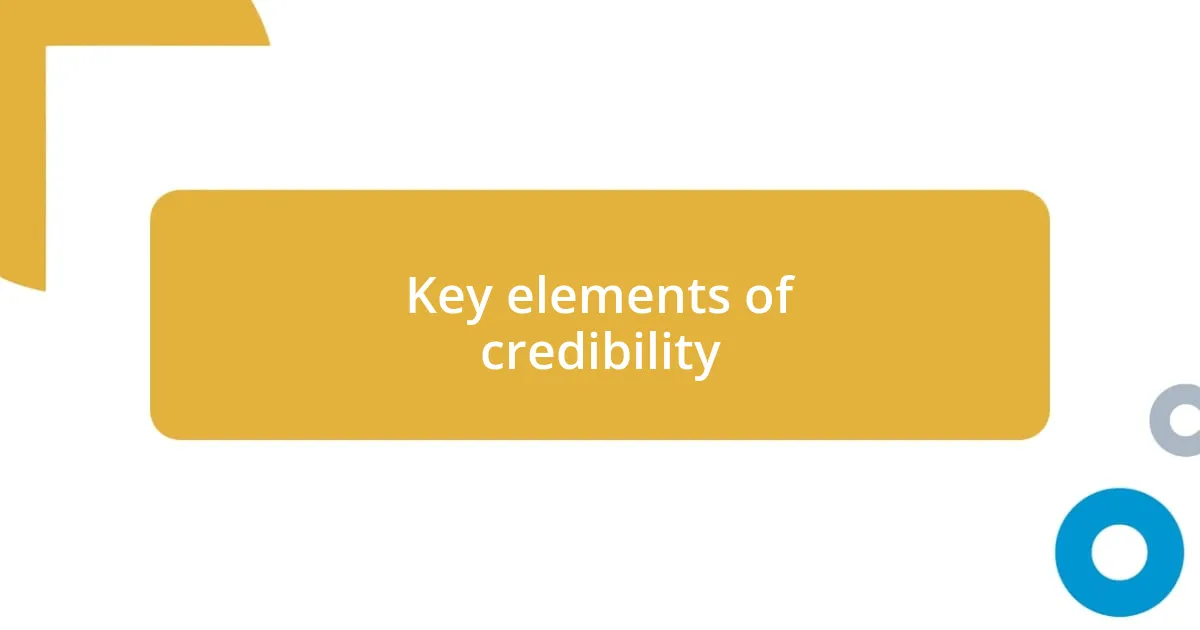
Key elements of credibility
When assessing the credibility of news, a few key elements stand out to me. First, the source’s reputation plays a crucial role. I recall a time when I encountered an article that seemed credible at first glance, but a quick check revealed it originated from a lesser-known site. It served as a reminder that not all outlets hold the same level of integrity or professionalism.
- Source Reputation: Well-known and established outlets are generally more reliable.
- Evidence of Claims: Look for data, statistics, or expert quotes that support the information presented.
- Bias Awareness: Understanding potential biases—whether political, financial, or emotional—can impact how news is reported and perceived.
Another vital aspect I often consider is the tone and language used. Sensational headlines and loaded language can signal that a story might not be presenting the facts objectively. I remember feeling uneasy when a headline screamed sensationalism, but after a closer look, the article turned out to be misleading. It’s moments like these that heighten my awareness of how language shapes our understanding of news.
- Tone and Language: Sensational or emotive language can indicate bias.
- Fact-Checking: Verifying claims through reliable fact-checking resources enhances credibility.
- Date and Context: Current events can evolve, and it’s essential to know if the information is up-to-date and relevant to today’s discourse.
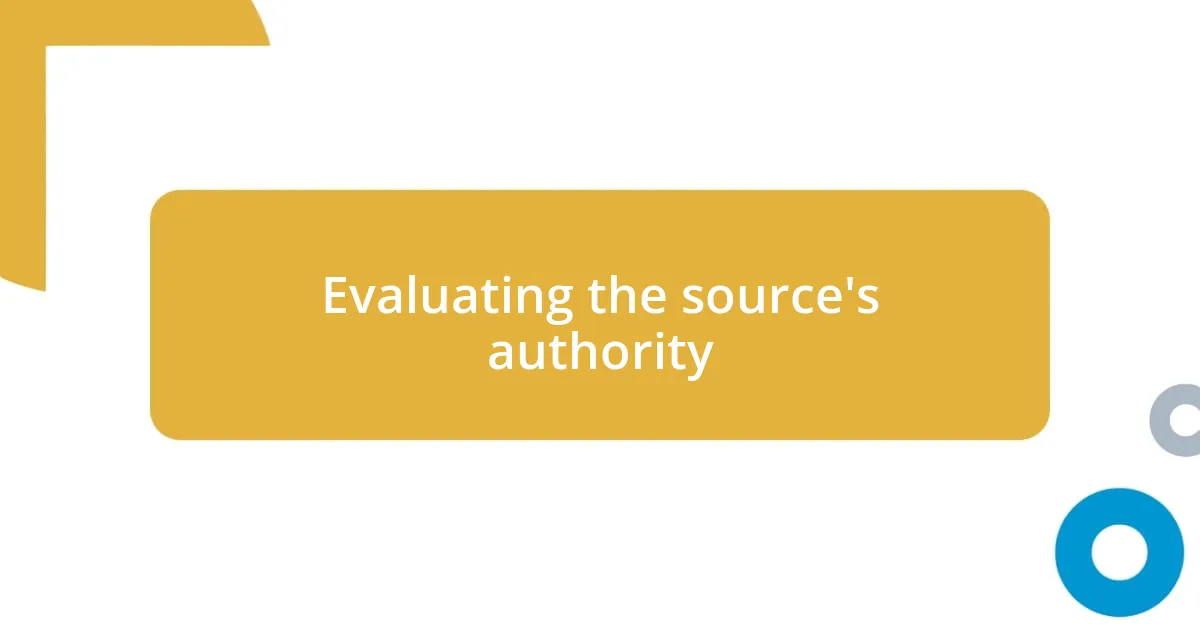
Evaluating the source’s authority
When I assess a news source’s authority, I often start by looking at who is behind the information. Are they experts in the topic they are discussing? For instance, I once read an article written by a scientist on climate change, and the depth of knowledge was evident. This experience reinforced my belief that expertise matters significantly in establishing credibility. It’s not just about the news outlet itself but also the qualifications of the individual writers or contributors.
Additionally, I always check the history of the news outlet. A respected history of journalism is often a mark of credibility. I recall a time I stumbled upon a new site boasting bold headlines but lacked a track record. Curiosity led me to dig deeper, only to find its existence was barely a year old. That moment reminded me how a source’s established timeline and previous reporting can serve as a barometer for its authority.
Lastly, affiliations and funding can play a critical role in how news is presented. When I read an article funded by an organization with an apparent agenda, I feel a twinge of doubt. One time, I discovered a seemingly reputable source that was backed by a lobbying group. This incident underscored how potential biases can influence the narrative, making it crucial to be aware of who is providing the funding and why.
| Source Authority Factors | Examples |
|---|---|
| Expertise of Contributors | Articles by professionals or academics in their field |
| Track Record | Established news outlets with a history of reliable reporting |
| Financial Backing | Funding sources that may influence reporting biases |
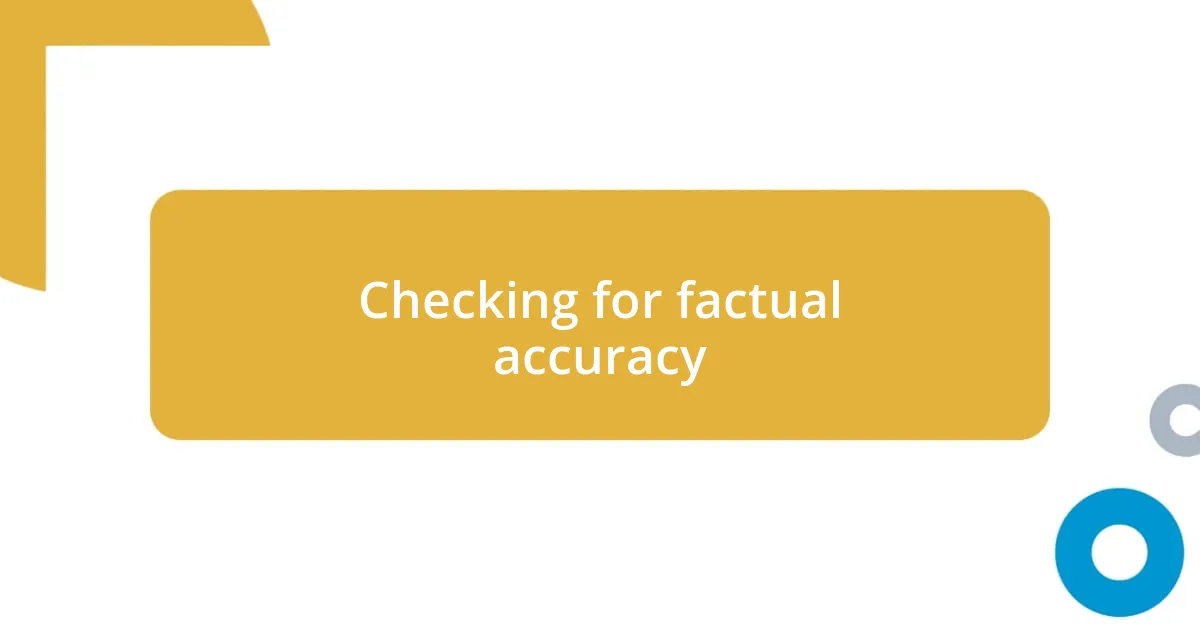
Checking for factual accuracy
When checking for factual accuracy, I always start by verifying the claims made in the article against reliable sources. I remember a time when I read a striking claim about a scientific breakthrough. It seemed promising, but when I looked it up on academic databases, I found no supporting evidence. That moment truly emphasized the importance of diligent fact-checking.
Another key step I take is seeking out data or statistics that back up the presented information. Once, I encountered a news piece that stated a dramatic increase in a specific health condition. However, as I dug deeper, the original study reported a much smaller increase. This experience reminded me that numbers can be manipulated or misrepresented, highlighting the need to scrutinize the data presented.
Lastly, I find that checking the date of the information is crucial. Information can become outdated rapidly, and I once fell into the trap of sharing an article that referenced a year’s-old study as if it were current. I felt a mix of embarrassment and realization when people pointed out the discrepancy. Ensuring that the information is up-to-date can truly impact how accurately a story reflects present realities.
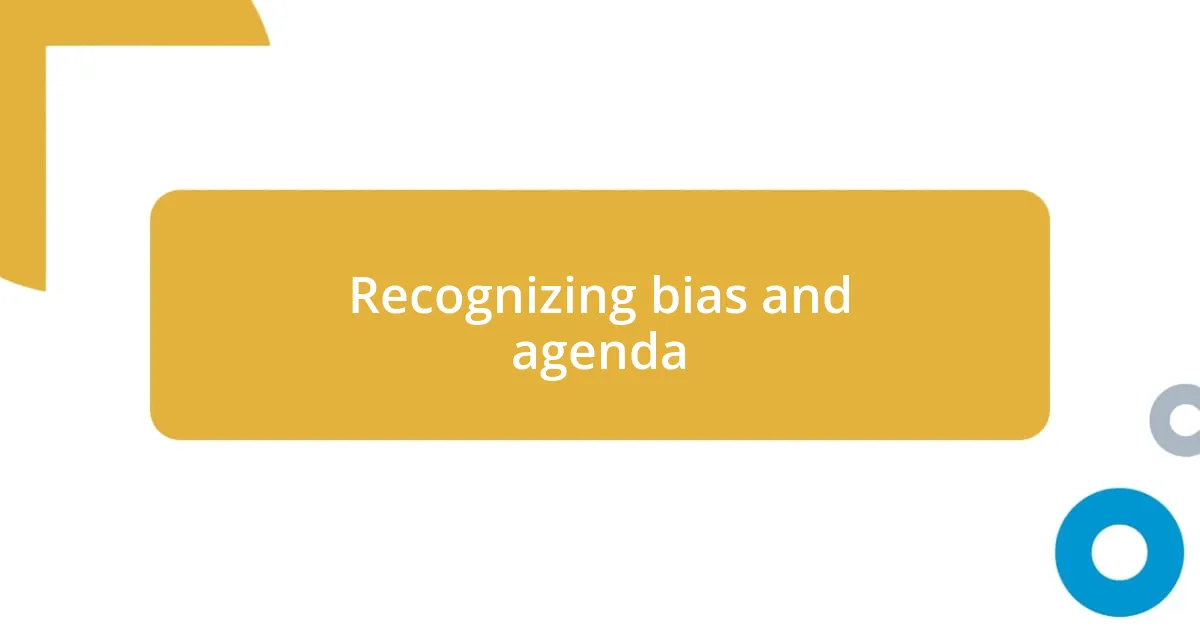
Recognizing bias and agenda
Recognizing bias in news can be like peeling back the layers of an onion; there’s often more beneath the surface than what meets the eye. For instance, I remember reading an article that presented a seemingly balanced view on a political issue. However, the language used subtly favored one side over the other. I realized then that examining word choice and tone is crucial in uncovering the underlying agenda of a piece. Have you ever stopped to consider how a single phrase might sway your opinion more than the facts themselves?
I also pay close attention to the framing of a story. An article I read about a protest was framed in a way that emphasized violence while downplaying the peaceful nature of the majority. This made me reflect on how journalists’ choices in framing can steer audience perception. It’s a reminder to question not just what is being reported, but also how it’s being portrayed. Are we, as readers, allowing particular narratives to shape our understanding?
Finally, I look at the diversity of opinions represented. A few months back, I came across a discussion panel on a controversial topic, but the panelists all came from a similar background and viewpoint. It made me wonder: are we getting the whole picture if dissenting voices are neglected? I’ve found that a well-rounded dialogue often leads to a deeper understanding, and it’s vital to seek out, or at least recognize, where a news source might be lacking in this regard.
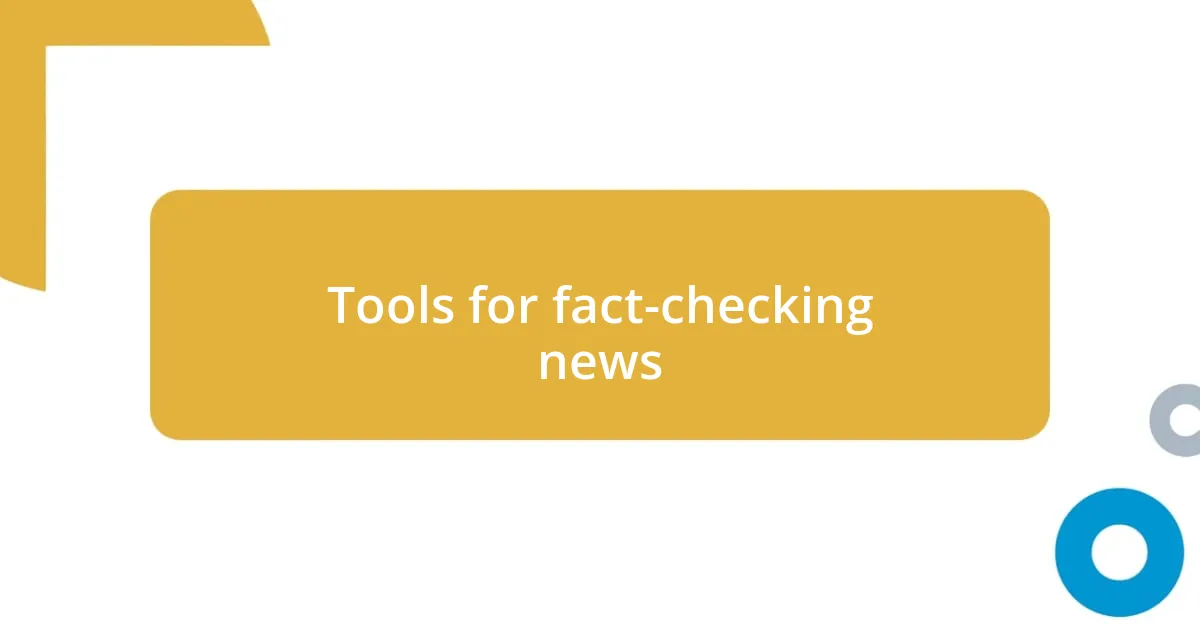
Tools for fact-checking news
When it comes to fact-checking tools, I’ve found that websites like Snopes and FactCheck.org are invaluable resources. These platforms specialize in verifying claims across a wide range of topics, from politics to pop culture. I distinctly remember the time a friend shared a sensational meme claiming a celebrity had done something scandalous. Before reacting, I checked Snopes, and to my relief, I discovered it was false. It’s one of those reminders that sometimes what grabs our attention isn’t the whole story.
Another tool that has become essential in my news consumption is Google Scholar. This resource provides access to academic articles and studies, which is fantastic when seeking deeper insights into a claim. I once encountered a news article that asserted a new drug was a gamechanger for a common condition. Instead of taking it at face value, I searched Google Scholar for relevant studies. Sure enough, I found research that not only verified but also contextualized those claims, showing me the importance of looking for scholarly support. Have you ever thought about the difference between a headline and the rigorous study behind it?
Additionally, I always keep an eye on various fact-checking apps that can quickly assess news articles at the click of a button. I once downloaded a tool that analyzes headlines for bias and sensationalism. This feature allowed me to see how certain headlines masked the actual substance of the articles they linked to. It sparked my curiosity—how many times do we scroll past misleading headlines without second-guessing their accuracy? Using these tools has transformed the way I interact with the news, making it an engaging and insightful process rather than a passive one.
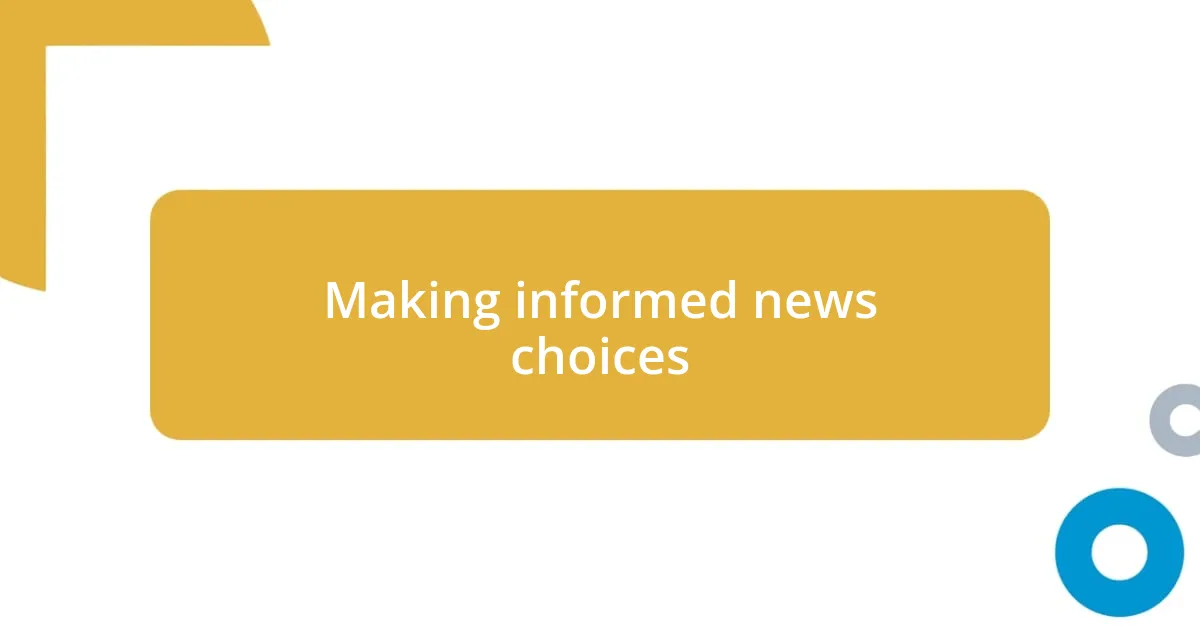
Making informed news choices
Making informed news choices means being intentional about what we consume and how we engage with it. I remember a time when I impulsively shared an intriguing headline without actually reading the article. The moment I realized the article contradicted the headline, I felt a pang of regret. It made me question: how often do we rush to share before fully understanding the content? Now, I try to pause and reflect before hitting that share button, making sure the information aligns with my values and comprehension.
I’ve also learned to diversify my news sources. A few months back, while following a major event, I alternated between a few outlets that had vastly different biases. This approach was eye-opening; some media outlets played up the drama, while others provided a calmer, more factual overview. It led me to wonder: how often do we get trapped in our echo chambers, only reinforcing our existing beliefs? By intentionally seeking varying perspectives, I’ve expanded my understanding and recognized the nuances often left out of singular narratives.
Lastly, I embrace the practice of critically questioning the information I encounter. Just last week, an article I read pushed a compelling narrative about a local issue. However, I noticed an absence of statistics or references, which raised a red flag for me. Do we often accept stories at face value without probing deeper? Now, I routinely ask myself what evidence supports the claims being made. This habit has transformed my interaction with the news, helping me become a more discerning and engaged reader.
